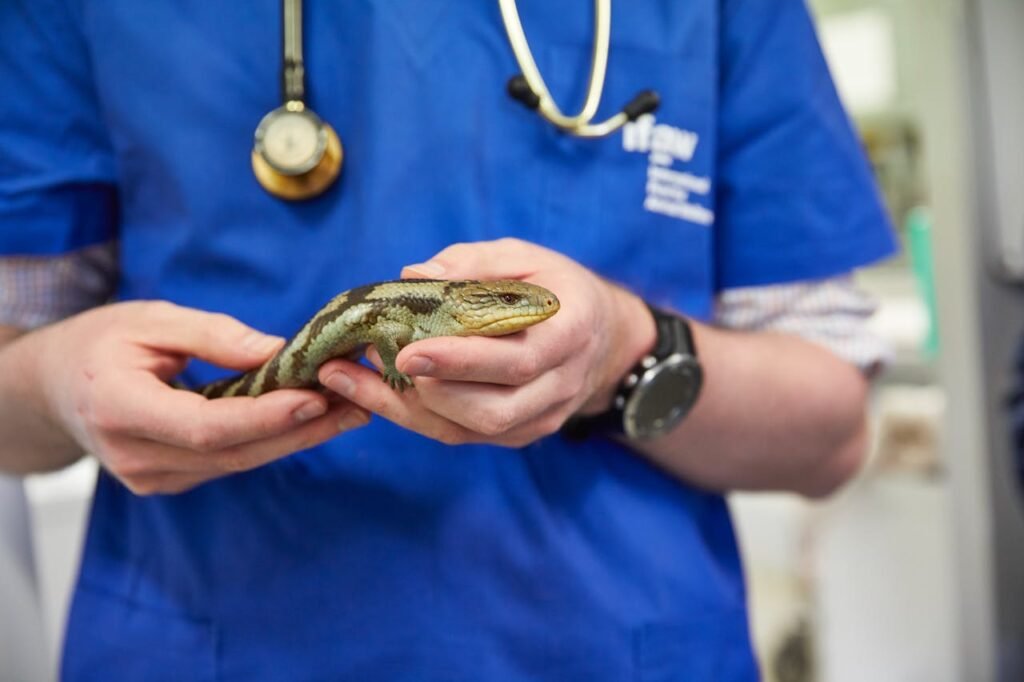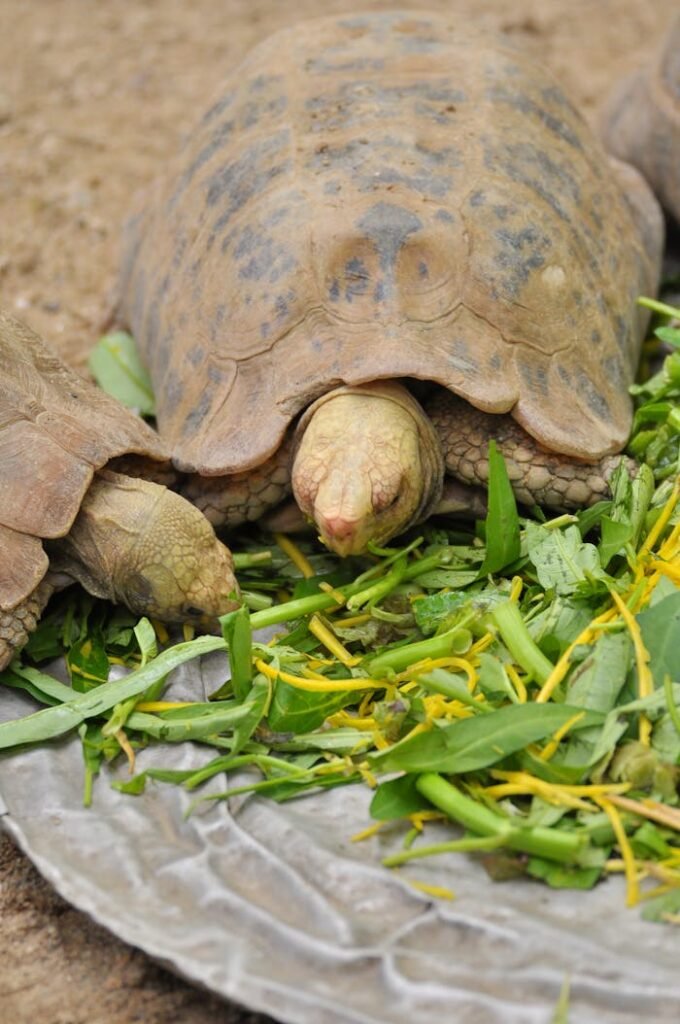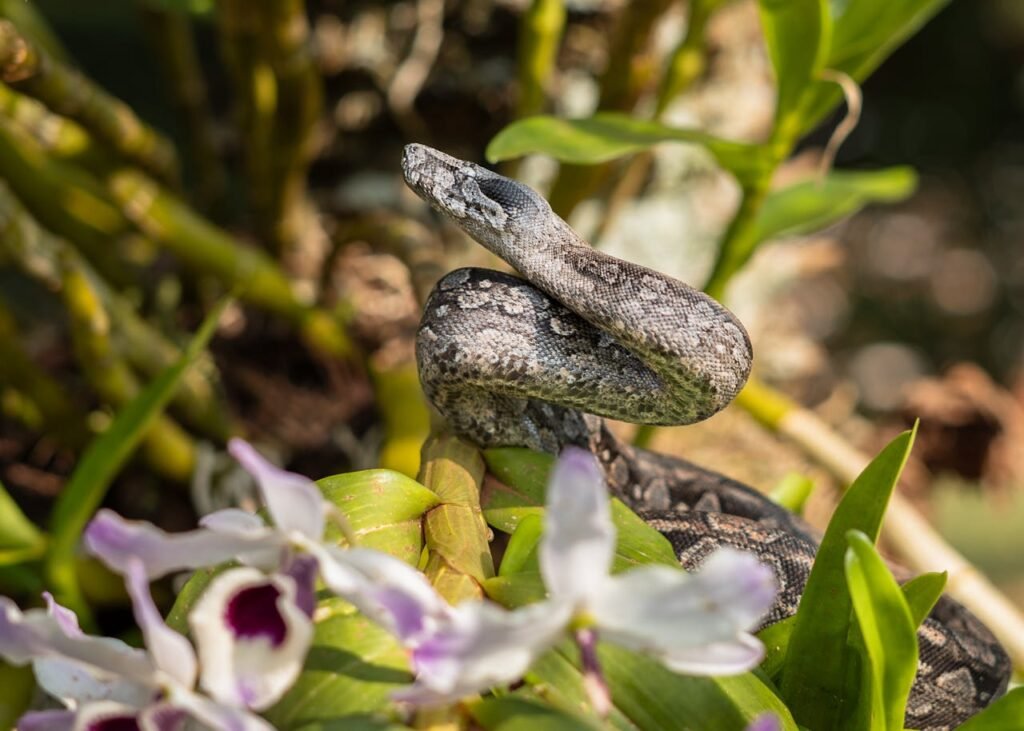Reptile ownership in Australia is a rewarding experience, but it also comes with a responsibility to maintain the health and well-being of your scaly friends. Reptiles such as bearded dragons, pythons, and blue-tongue skinks have unique needs that require specific care. This article explores common health issues that reptiles face in Australia, such as parasites, shedding problems, and metabolic bone disease, along with prevention and treatment tips to ensure your reptile thrives.
1. Understanding Common Health Issues in Australian Reptiles

1.1. Parasites in Reptiles
External and internal parasites are a frequent problem for reptiles, especially in Australia’s diverse climate. Mites, ticks, and internal parasites like worms can cause serious health concerns.
- Symptoms: Lethargy, lack of appetite, visible mites or ticks on the skin, weight loss, or abnormal stool. Reptiles may also rub against objects to relieve irritation caused by external parasites.
- Prevention: Maintain a clean enclosure and ensure proper hygiene when handling your reptile. Regularly check for signs of mites or ticks and avoid wild-caught prey. Quarantine new reptiles for 30 days before introducing them to existing pets to prevent cross-contamination.
- Regional Considerations: In Northern Australia, where the climate is tropical, higher humidity levels can encourage parasite growth. Regularly inspect enclosures for mites and ticks, as they thrive in moist environments. In contrast, Southern Australian regions may have lower humidity, making mite infestations less likely but requiring vigilance for other parasites like intestinal worms.
- Treatment: Consult a veterinarian for antiparasitic medication. For external mites or ticks, using a reptile-safe spray can help, but it’s crucial to get professional advice for proper dosages. Internal parasites often require prescription dewormers.
1.2. Shedding Problems in Reptiles
Shedding is a natural process, but improper shedding (dysecdysis) can cause discomfort and health issues for reptiles. It’s often a sign of environmental problems like low humidity or malnutrition.
- Symptoms: Patches of retained skin, especially around the eyes, toes, and tail, which can lead to infections if left untreated. Retained eye caps can cause vision issues, while constricted bands of retained skin around limbs may lead to necrosis.
- Prevention: Ensure optimal humidity levels in the enclosure. For species like bearded dragons, misting the environment or providing a humid hide filled with moist sphagnum moss can help. Rough surfaces like branches or rocks in the habitat aid in shedding.
- Regional Considerations: In Western Australia’s arid regions, providing a humid hide is particularly crucial to prevent shedding issues, as the dry air can make it difficult for reptiles to shed properly. In more humid areas like Queensland, focus on maintaining ventilation to prevent mold growth in humid hides.
- Treatment: Soak your reptile in lukewarm water to assist in shedding and gently remove the retained skin with a damp cloth. Never forcefully peel retained skin, as this can cause injury. If the problem persists, seek veterinary assistance to avoid infections.
1.3. Metabolic Bone Disease (MBD)
Metabolic Bone Disease is one of the most serious health issues in reptiles, often caused by inadequate calcium, Vitamin D3, or UVB exposure. It is particularly common in species like bearded dragons and turtles that require substantial UVB light.
- Symptoms: Soft or swollen limbs, lethargy, lack of appetite, and deformities in bones or the jaw. Advanced cases may show signs like muscle twitching or partial paralysis due to severe calcium deficiency.
- Common Mistakes: Owners often use UVB bulbs that have lost their effectiveness over time, leading to insufficient Vitamin D3 production. Another common error is feeding a diet with an improper calcium-to-phosphorus ratio, which inhibits calcium absorption.
- Regional Considerations: In the Australian outback, where the sun is strong, some reptile owners may be tempted to rely on natural sunlight instead of UVB bulbs. However, ensuring a proper balance of indoor UVB exposure is crucial, especially during cooler months when reptiles spend less time outdoors.
- Prevention: Provide a balanced diet rich in calcium and ensure proper UVB lighting for your reptile’s enclosure. Replace UVB bulbs every 6-12 months, as their output diminishes over time. Calcium supplements and appropriate dietary choices, like gut-loaded insects, can prevent MBD.
- Treatment: Early stages can be managed with dietary adjustments and UVB exposure, but advanced cases require veterinary intervention, including calcium injections and intensive care.
2. Setting Up a Healthy Environment for Reptiles
2.1. Importance of Temperature and Humidity Control
Reptiles are ectothermic, relying on their environment to regulate their body temperature. Inconsistent temperatures or humidity levels can cause stress and health issues like respiratory infections, which are common among Australian reptiles.
- Optimal Temperature Ranges: Research the specific needs of your reptile species. For example, bearded dragons thrive with a basking spot of 35-40°C, while pythons prefer around 30-32°C. Use heat lamps or ceramic heat emitters to maintain stable temperatures.
- Humidity Needs: Blue-tongue skinks require moderate humidity levels (40-60%), while other reptiles, like some pythons, need higher humidity. Use a hygrometer to monitor and adjust humidity levels. Misting systems or foggers can help maintain proper moisture levels in larger enclosures.
- Regional Considerations: In dry regions like South Australia, using a substrate that retains moisture, such as coconut husk, can help maintain appropriate humidity levels. In tropical regions like North Queensland, be mindful of excess humidity, which can lead to respiratory infections. Use dehumidifiers or increase ventilation in enclosures as needed.
- Thermal Gradient: Create a thermal gradient within the enclosure, providing a warmer basking area and a cooler side. This allows reptiles to regulate their body temperature by moving between different zones.
2.2. Cleanliness and Enclosure Maintenance
A clean enclosure is key to preventing the buildup of harmful bacteria and parasites, which can lead to health issues like respiratory infections or skin diseases.
- Cleaning Routine: Spot clean daily to remove waste and uneaten food, and perform a deep clean every 2-4 weeks. Use reptile-safe disinfectants to avoid harmful residues, and ensure proper ventilation in the enclosure to prevent mold growth.
- Substrate Choices: Choose substrates like reptile carpet, coconut fiber, or paper towels to reduce the risk of impaction and make cleaning easier. Avoid sand or small particulate substrates that can be accidentally ingested.
- Deep Cleaning Tips: Remove all enclosure decorations and thoroughly wash them with hot water and disinfectant. Replace any porous materials that might harbor bacteria or mites, such as wood logs or untreated branches.
3. Proper Nutrition: A Key to Reptile Health

3.1. Balanced Diet for Different Reptile Species
Providing the right diet is crucial for your reptile’s health. Each species has specific dietary requirements, which, if not met, can lead to malnutrition and other health issues.
- Herbivores: Include a variety of leafy greens, vegetables, and occasional fruits. For example, bearded dragons enjoy collard greens, dandelion leaves, and squash. Avoid feeding spinach or lettuce excessively, as these can interfere with calcium absorption.
- Carnivores: Offer gut-loaded insects like crickets, mealworms, and roaches. For snakes, properly sized frozen-thawed rodents are ideal. Avoid feeding live prey to prevent injuries and stress.
- Omnivores: Combine plant-based foods with insects to ensure balanced nutrition. Blue-tongue skinks benefit from a mix of vegetables, protein sources, and occasional fruit treats. Rotate food types to ensure dietary variety and avoid nutrient deficiencies.
3.2. Importance of Supplements
Calcium and Vitamin D3 supplements are vital, especially for reptiles that do not receive enough UVB light. Supplements should be tailored to the species and its dietary needs.
- Calcium Powder: Dust insects with calcium powder before feeding to ensure adequate intake. Herbivorous reptiles may require a calcium supplement sprinkled directly on their food.
- Vitamin Supplements: Use a multivitamin supplement once a week to prevent deficiencies. Be cautious not to over-supplement, as this can lead to toxicity.
- Gut-Loading Techniques: Ensure that feeder insects are gut-loaded (fed with nutritious foods) 24-48 hours before offering them to your reptile. This improves their nutritional value, providing your pet with more vitamins and minerals.
4. Seasonal Care Adjustments
4.1. Adjusting for Winter vs. Summer
Reptiles’ needs can change with the seasons, especially in regions like Australia with significant temperature variations.
- Winter Adjustments: Use ceramic heaters to maintain temperatures during cooler months. Reduce the photoperiod to mimic shorter daylight hours and monitor your reptile’s appetite, as some may eat less during winter.
- Summer Care: During the Australian summer, ensure that enclosures do not overheat. Provide shaded areas and extra hydration, such as water bowls or misting, to prevent dehydration.
4.2. Heatwave Care Tips
Heatwaves can be especially dangerous for reptiles. During extreme heat, move enclosures away from windows and provide additional water sources to ensure your pet stays hydrated.
5. Choosing a Reptile-Savvy Veterinarian in Australia

Finding a veterinarian with experience in reptile care is crucial. In Australia, there are numerous clinics specializing in exotic pets.
- How to Find a Qualified Vet: Look for clinics that specifically list reptiles as their area of expertise. Ask about the vet’s experience with your reptile species and read online reviews from other reptile owners.
- Routine Vet Visit: During a check-up, a vet may perform a physical exam, fecal analysis, and assess the reptile’s diet and habitat. This can help catch potential issues before they become serious.
- Emergency Care: Locate a clinic that offers emergency services, as quick intervention can be vital in critical situations. Some conditions, like egg-binding in female reptiles, require immediate attention.
6. Conclusion: Prioritizing Health and Wellness for Your Reptile
By understanding common health challenges and providing a well-maintained environment, you can ensure a healthy life for your reptile. Regular monitoring, proper diet, and a clean habitat will go a long way in preventing issues like parasites, shedding problems, and metabolic bone disease. With the right care, your reptile can thrive and bring you joy for many years.
